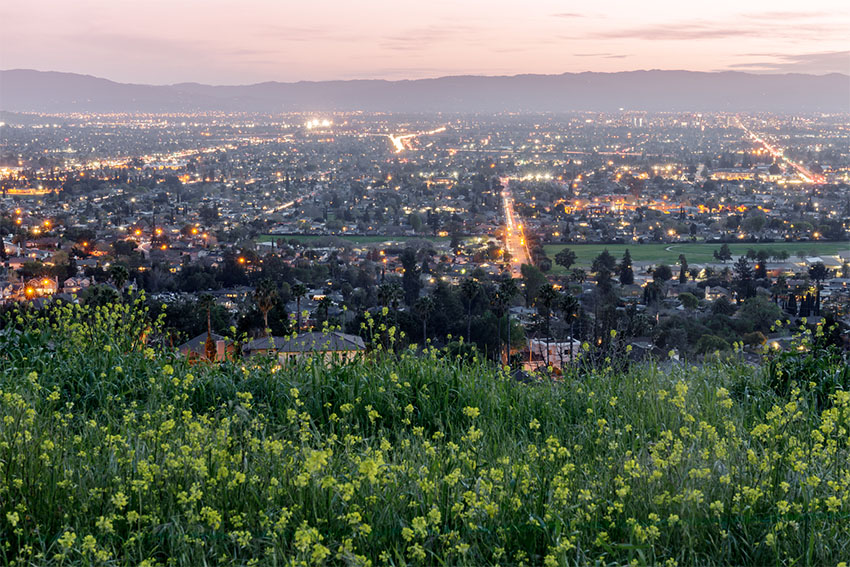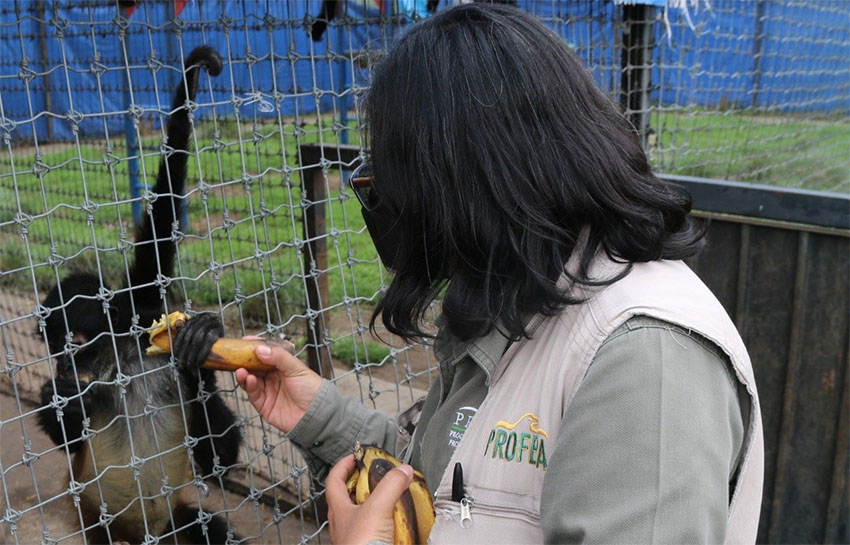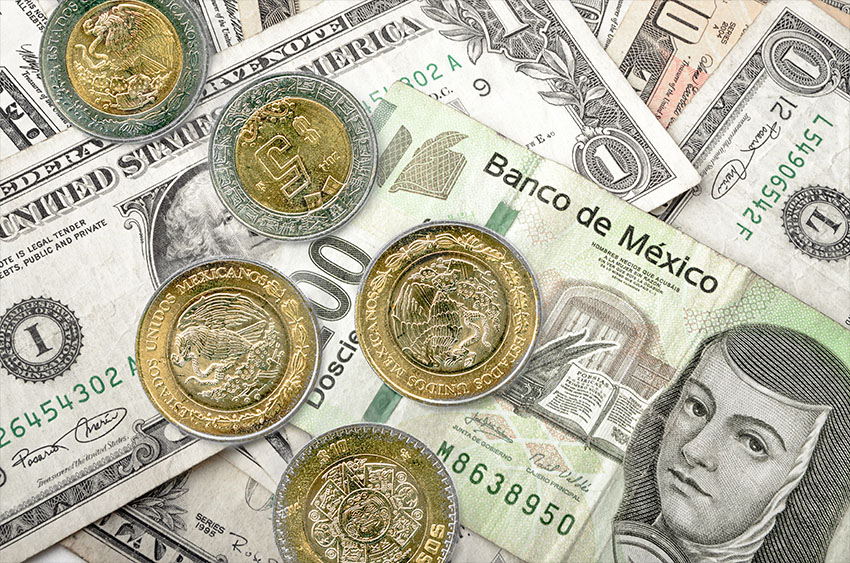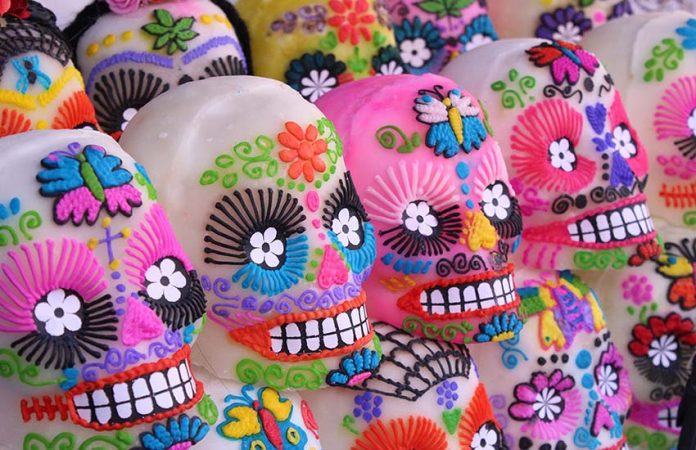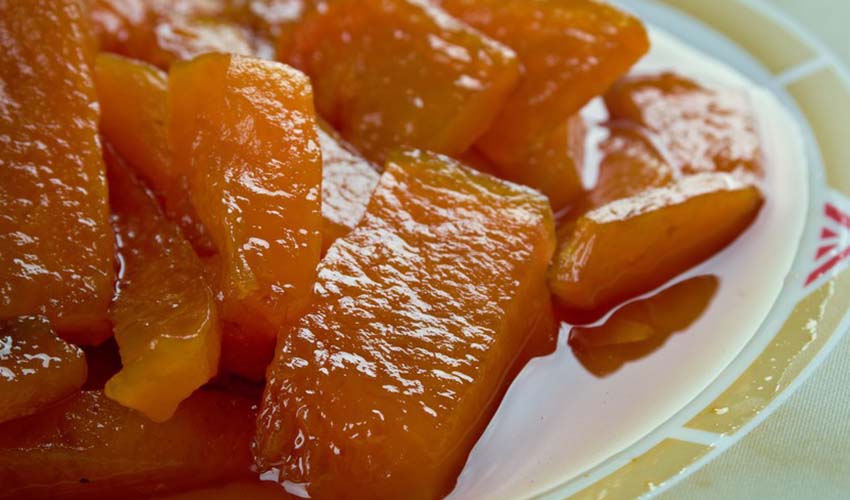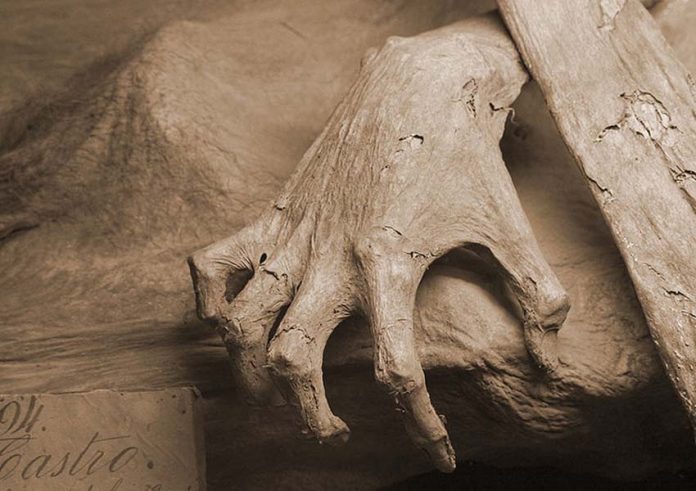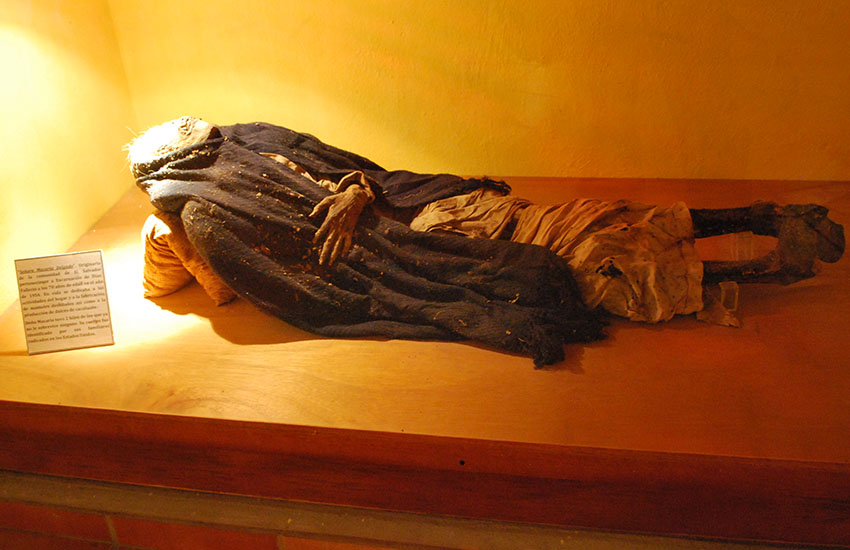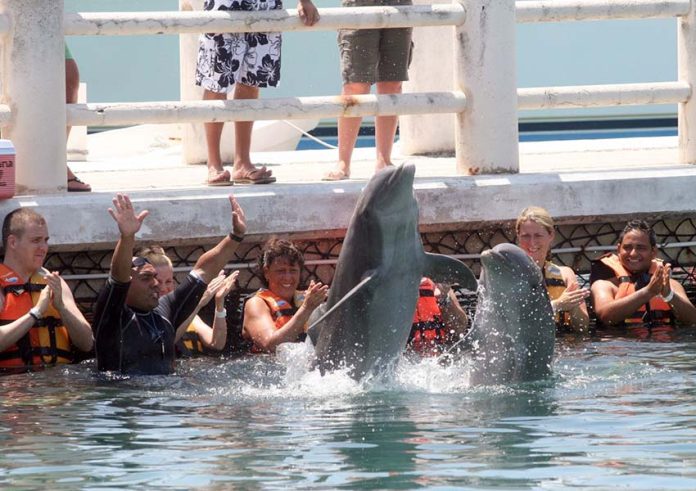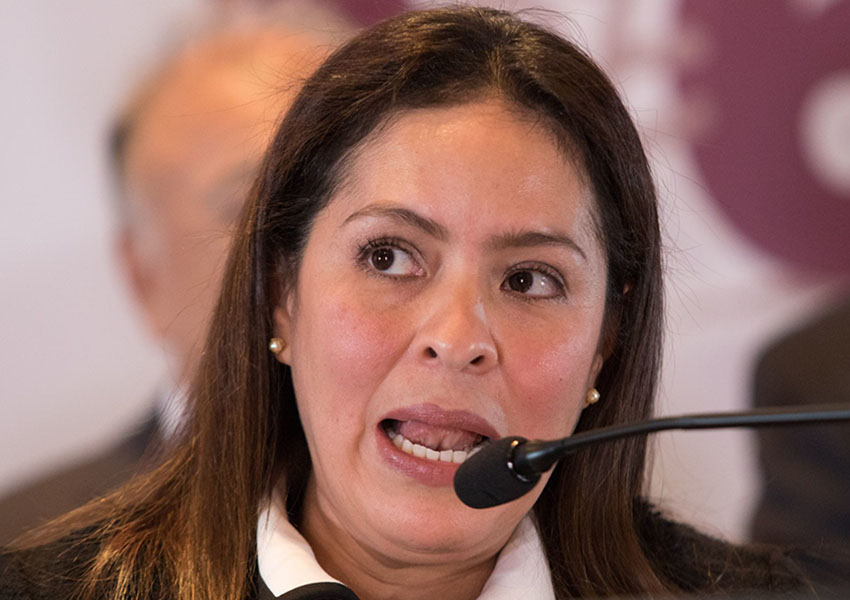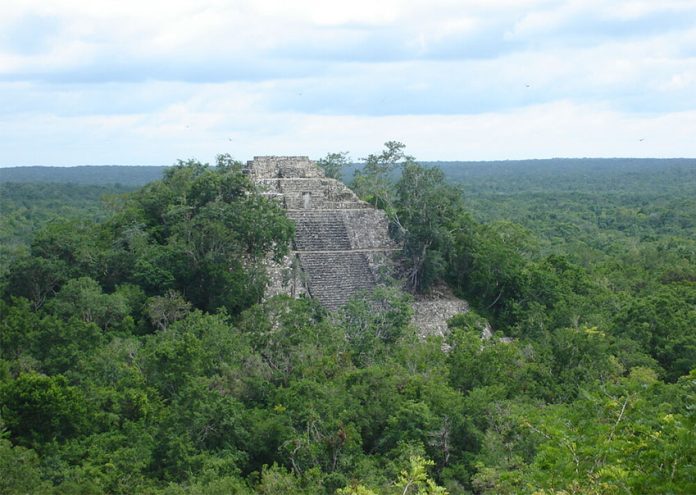It’s my favorite time of the year!
The weather is crisp but not yet intolerably cold; it’s energizing rather than depressing. Is there anything better than sweater weather paired with a bright sun and a warm drink in your hands?
Here in Mexico, we might not get many golden leaves, but we do get golden flowers: cempasúchil, or the marigold plant, is the official flor de muerto, which I think is a pretty fair exchange.
We also get brightly-colored papel picado (those tissue paper decorations with cut-out patterns that go on and behind Day of the Dead altars). We get candied skulls and special bread called pan de muerto, decorated with sugar crystals sparkling on top made to look like crossed bones.
What’s not to love?
Day of the Dead has been my favorite Mexican holiday since my first experience celebrating it 20 years ago in Naolinco, a small town in the mountains of Veracruz. The town’s official business is all things leather – mostly shoes – but they’re also locally famous for going all-out for this particular holiday.
That first year, my small group of fellow study-abroad students and I wandered around the town, looking at altars, many of which were displayed in the fronts of homes — whose owners beckoned us in to see them.
We’d eaten dinner at a restaurant first, though we needn’t have done so: we were given tamales, bread and homemade wine by all the strangers inviting us into their homes.
Cempasúchil seemed to glow brightly from every corner that night, and music from the carolers in the busy graveyard drifted over the town. What a night! I was hooked.
Last year, I went to Naolinco again and stayed this time with a friend living in the next town over. Despite the pandemic, the streets were filled.
While there were too many crowds for anyone to be inviting throngs of people inside their houses, the town was still brightly decorated, the celebration in full swing. It had officially been “discovered” by us city folk, and while I’m sure it’s a boon for tourism and represents a well-appreciated swell of income for the businesses there, I wonder how many native inhabitants choose to stay inside on those days for a little peace with their dead.
During the 19 years between my first and second Naolinco Día de Muertos trips, how I celebrate the holiday has changed.
I still stop to appreciate the public altars around my city, Xalapa, Veracruz, and I go to the series of Día de Muertos plays (always one funny, one serious, and one so weird and abstract I never understand what it’s about) that are put on at the Bicentennial Park. And hey: I’ll accept tamales, chocolate, and bread from pretty much anyone.
I still love the public aspect of the holiday, but with my own altar becoming more crowded each year, I make a point of spending time with it here at home. Now it’s a time for my dead who need to get the attention they deserve.
This year (so far), I’ve reserved the places of honor for my mother and my grandmother, one on each side. My mother visited me in Mexico several times and loved it. She hadn’t wanted me to come initially, but when she got here for the first time, she told me she understood why I was so happy here.
My paternal grandmother, as far as I know, never did come to Mexico … at least not on any kind of a long trip that I know of. She was also deeply scandalized by certain aspects of the Mexican Catholic Church. “Sarah, they worship the Virgin Mary as if she were a goddess!” she’d say, exasperated — and, hey, she wasn’t wrong.
I wonder what she would say to being on my very non-Presbyterian altar now. Surely, the cosmic version of herself would appreciate the intention.
My own dead grew up in, lived and died in a culture that did not celebrate death; more than anything, we tried to ward it off. The only appropriate emotions in the face of death were sorrow and terror, and we worked hard to avoid talk of it; it was almost unspeakable.
But trying to run away from the reality of death is certainly a loser’s game if there ever was one.
I miss my mom and my grandma. And celebrating them on Day of the Dead doesn’t mean that I get them back, but it does mean that there’s a carved-out block of time for me to sit with them, a tradition that is becoming more important to me as the years go by.
Now, the celebration is bittersweet and more personal, which in my book still beats just plain sorrowful.
So I set things out for my dead: flowers, chocolate, tamales, mandarins. I sprinkle cempasúchil petals around and light some candles. And then I sit for a while and try to conjure them.
I imagine them walking into the room and having a seat next to me. Will I see them again, here or after? Did they go out like candles, or are they out there in some conscious form, knowing things that I don’t? There’s no greater mystery than that of the one experience no one’s come back to tell us about.
Day of the Dead is a time to remember, and it’s also a time of reminders: we’ll all be with them soon enough. So, live it up now: there’s chocolate and bread to be had.
Sarah DeVries is a writer and translator based in Xalapa, Veracruz. She can be reached through her website, sdevrieswritingandtranslating.com



